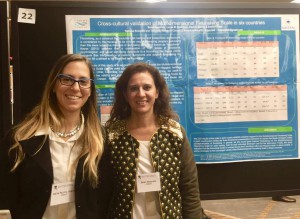Belén Mesurado, researcher of the Project “The Brain and the Personal Self”, participated in the 2018 SRA (Society for Research on Adolescence) Biennial Meeting, that took place in Mineapolis (United States), on April 12-14. This biannual conference received more than 1,500 researchers and people interested in any aspect of research on adolescence. The conference included topics with empirical, theoretical, historical and methodological research of all disciplines related to adolescence.
Here you may read the three abstracts of Belén Mesurado’s presentations, written in collaboration with ohter authors:
1). ‘Hero’: a technological application to foster prosocial behaviour in adolescents. Belén Mesurado, M. José Distefano, Gabriela Robiolo, y M. Cristina Richaud.
‘Positive Technology’ (PT) is the “scientific and applied approach that uses technology to improve the quality of our personal experience with the goal of increasing wellness and generating strengths and resilience in individuals, organizations and society” (Botella et al., 2012, p. 1). Based on PT’s approach, we developed in 2016 a prototype of the ‘Hero Programme’ as a system designed to foster prosocial behaviour (virtues and actions to benefit others) in adolescents (12-15 years old) in a controlled way. Hero consists in several strategies structured in five modules, promoting empathy, gratitude, forgiveness, satisfaction, and general prosocial behaviour. The first module (‘Empathy Island’) explains the importance of empathy for the life and society, and promotes emotional recognition. The second one (‘Gratitude Island’) is aimed at developing different psychological strengths through the remembrance of gratitude in personal life events. The third (‘Forgiveness Island’) is aimed at training various psychological techniques to promote forgiveness. The fourth (‘Satisfaction Island’) is aimed at promoting positive emotions, such as relaxation and joy, through emotional induction procedures. The last one (‘Prosocial Behaviour Island’) is aimed at sensitising about the economic, educational, and other social needs that exist in Latin American countries, and at encouraging adolescent involvement in social change. The objective of this study is to analyse the efficacy of ‘Hero’ in promoting prosocial behaviour in adolescents from Argentina. Participants were 90 secondary students (50% females; of 13 to 17 years of age; M age = 15.74, SD =1.06) in the experimental group and 100 secondary students (50% females; of 13 to 17 years of age; M age =15, SD 1.34) in the control group. Adolescents’ prosocial behavior toward different targets (Padilla-Walker & Christensen, 2011) were used to measure the prosocial behavior toward friend, family and stranger. As expected, students of experimental group showed significant improvements in prosocial behavior toward stranger. Contrary to expectations, students demonstrated no change in prosocial behavior toward friend an family.
 2). Cross-cultural validation of Multidimensional Flourishing Scale in six countries. Belén Mesurado, Lucas Marcelo Rodriguez, Paulina Guerra, y M. Emilia Oñate.
2). Cross-cultural validation of Multidimensional Flourishing Scale in six countries. Belén Mesurado, Lucas Marcelo Rodriguez, Paulina Guerra, y M. Emilia Oñate.
Flourishing, as a construct that includes both hedonic and eudaimonic dimensions, is considered by this literature to be a richer way of assessing people’s well-being than the mere subjective measure of well-being commonly known as “happiness”. Keyes (2013) believes that a combination of high levels of emotional, psychological, and social well-being contribute to a flourishing life. Keyes (2002) suggests that the presence of hedonic symptoms and positive functioning are required for a person to be classified as flourishing. The purpose of this study is to empirically test to what extent the Multidimensional Flourishing Scale can be used across countries with a Luso or Hispanic heritage (Argentina, Chile, Colombia, Mexico, Portugal and Spain). Hence, we seek to investigate the validity and stability of the Multidimensional Flourishing Scale by Mesurado, Crespo, Rodriguez & Debeljuh (under review) across these six countries. A total number of 1500 participants from 6 different countries with Luso-Hispanic roots participated in this study (Argentina, Chile, Colombia, Mexico, Portugal and Spain). Data included in the study was collected from different foundations or institutions located in each country through a website: www.globalhomeindex.org. Participants completed the 12-item version of the Multidimensional Flourishing Scale by Mesurado et al. (under review). Each item is phrased in a positive manner. A five-level Likert scale (1 = Strongly Disagree, 2 = Disagree, 3 = Neutral, 4 = Agree, 5 = Strongly Agree) was used to measure social and emotional dimensions and a five-level semantic differential scale was used to measure emotional dimensions (e.g. 1 = Negative to 5 = Positive). The results indicated that the theoretical three-factor model fit the data well in the six countries included in this study. We used multiple group analysis to test whether the three-factor model was invariant across the six countries. The results suggest that configural invariance, metric invariance and scalar invariance may hold across the six countries, but error variance-invariance does not. In general, we also found good Internal Consistency of The Multidimensional Flourishing Scale for each country, both for each individual dimension and for the total score.
3). Inequity Aversion in a Vulnerable Sample of Argentine Children. Paulina Guerra, Belén Mesurado y M. Cristina Richaud
Equity is the proportional distribution of resources between the members of a group, when it is assumed that everyone contributed equally (LoBue, Nishida, Chiong, DeLoache, & Haidt, 2009). When this distribution is not proportional, inequity aversion may emerge which is the resistance to this unequal distribution. We can distinguish two types of inequity aversion, when the person receives more than the others it is called advantage inequity aversion, and when the person receives less than the others it is a disadvantage inequity aversion. The objective of this presentation is to study the inequity aversion in advantage and disadvantage conditions in a vulnerable sample of Argentine children between 5 and 10 years old. The sample included 30 kids of both sexes of an urban-marginalized population of Argentina (Mean age = 7.23, SD = 1.16). We used the Inequity Game (Blake, & Mc Auliffe, 2011) to measure the inequity aversion. The changes across all conditions (equity, inequity in advantage and disadvantage) were assessed by Friedman’s test for each group (5 to 7 and 8 to 10). These preliminary results showed no differences in the inequity aversion between kids of 5 and 7 years old (Friedman’s test = 2, p = .37), but showed more disadvantage inequity aversion than advantage inequity aversion in kids between 8 and 10 years old (Friedman’s test = 6.5, p < 0.05) See Figure 1. These preliminary results show that the disadvantageous inequity aversion emerges later in vulnerable children of Argentina than in children of other cultures (Blake, McAuliffe et al. 2015). These may be related to the specifics characteristic of this population. Nevertheless we need a bigger sample to make conclusions.
